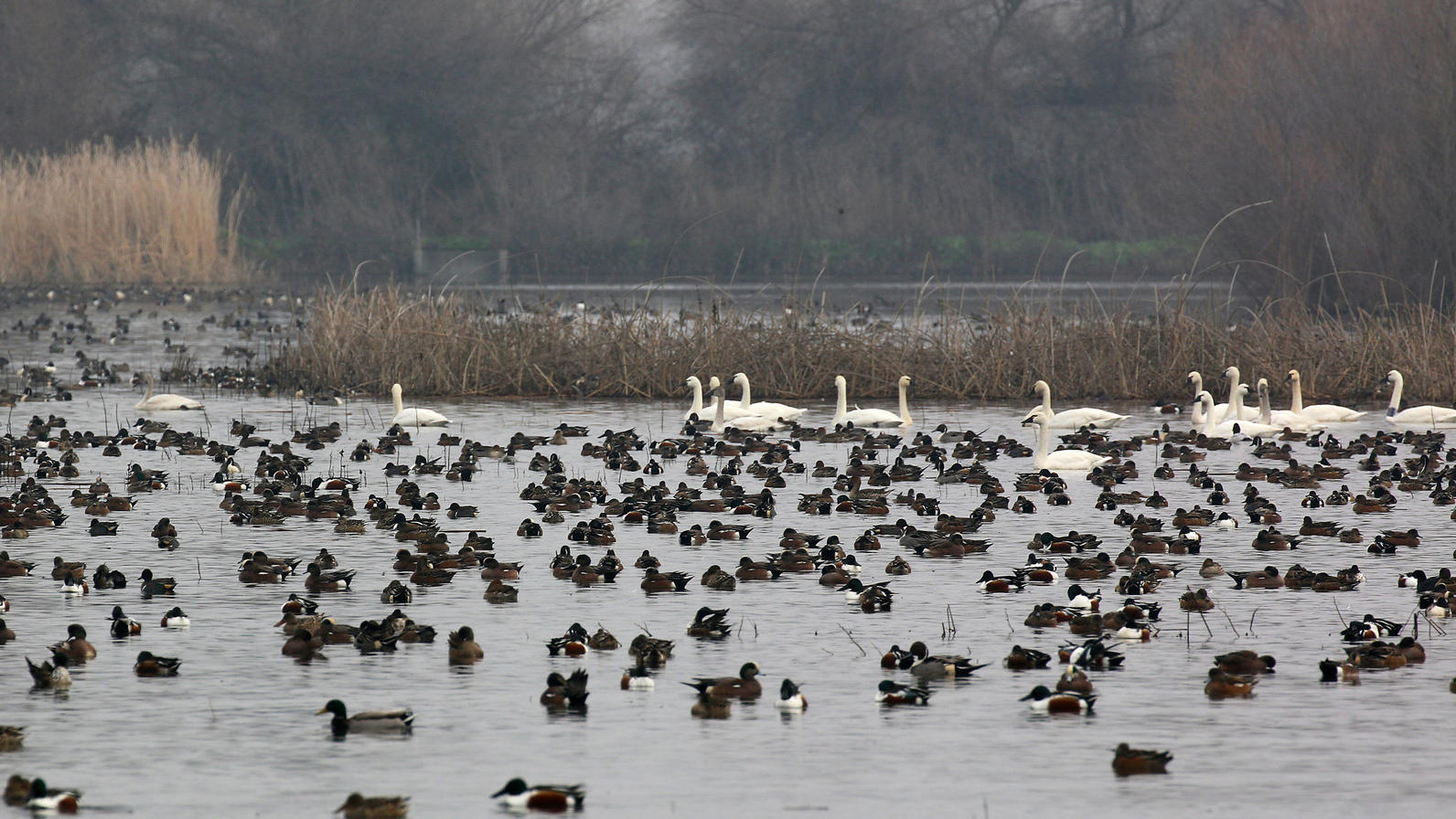
As an extraordinarily wet rainy season draws to a close, California has hit another water milestone. For just the second time in 25 years, the Bureau of Reclamation has announced that it will provide full water supplies to Central Valley refuges and wildlife areas.
But whether all that water will really get to where it’s intended is still an open question. It never has.
Audubon California and our partners in the conservation community -- including The Nature Conservancy, Defenders of Wildlife, Ducks Unlimited, California Waterfowl, Point Blue Conservation Science, and others -- have long advocated for full deliveries. This announcement is great news for the ducks, ibis and other birds nesting in the Central Valley now, and for the millions of birds that will arrive this fall in the biggest bird migration in the West. Today, water supplies allow refuge managers to maintain the brood ponds that breeding waterfowl use to keep ducklings safe from predators. And, perhaps most importantly, adequate water supplies now will allow wetland managers to grow wetland plants this summer that produce the food that migratory birds will eat this fall and winter. That food is the fuel that allows one of the largest populations of migratory waterbirds on the continent to survive their annual spring flight from California back to their northerly breeding grounds.
But this water supply milestone comes with a big asterisk.
What constitutes full refuge water supplies? This is the amount of water that refuges need to meet the needs of birds and other wildlife for the entire year. These water levels were designated through scientific consensus and then mandated by federal law. For the last fifteen years, the Bureau has been required by federal law to provide this amount of water. Yet it has never actually delivered the full supplies to all of the refuges and wetlands under this law and that is the asterisk.
Back in 1992, Congress directed the Bureau to build water delivery infrastructure – pumps, pipes and canals – to allow refuges and wildlife areas with a guaranteed federal water supply to actually receive that water. A quarter century later, five of those facilities (Sutter National Wildlife Refuge and Gray Lodge Wildlife Area in the Sacramento Valley and the Pixley National Wildlife Refuge, East Bear Creek Unit of the San Luis National Wildlife Refuge and the Mendota Wildlife Area in the San Joaquin Valley) still do not have the water conveyance projects they need to receive full water supplies.
We are thrilled that our few remaining wetlands in the Central Valley of California will be receiving a full water allocation this year. But it’s frustrating that, even in one of the wettest years on record, the Bureau will be unable to actually deliver full refuge supplies to all of the refuges – a quarter century after Congress created the water supply conveyance program. It’s time to finish the job of building refuge infrastructure.
The Bureau’s announcement highlights two other areas that we need to fix to ensure that our refuges receive the water they need to reliably and consistently provide year-round habitat.
First, the Bureau should track progress and report against full refuge deliveries in their annual water allocation announcements and reporting. You can’t manage what you don’t measure. The exclusion of full refuge supplies from announcements and reporting gives the impression that these supplies – which are required by federal law – are a lower priority for the Bureau.
Second, the Bureau should redouble its efforts to negotiate long-term agreements or outright purchase of water rights for refuge water supplies. Congress allows refuge deliveries to be reduced in dry years when all users are facing cutbacks, but full refuge water deliveries should be the norm, especially when considering that refuge water delivery is less than 2% of the water delivered as part of the overall system.
With so few wetlands and refuges left in California and their large importance to resident and migratory wildlife, we must consistently allocate AND actually deliver full water supplies to these important places.
Meghan Hertel is Audubon California's Director of Land and Water Conservation
By Meghan Hertel
Monthly Giving
Our monthly giving program offers the peace of mind that you’re doing your part every day.




